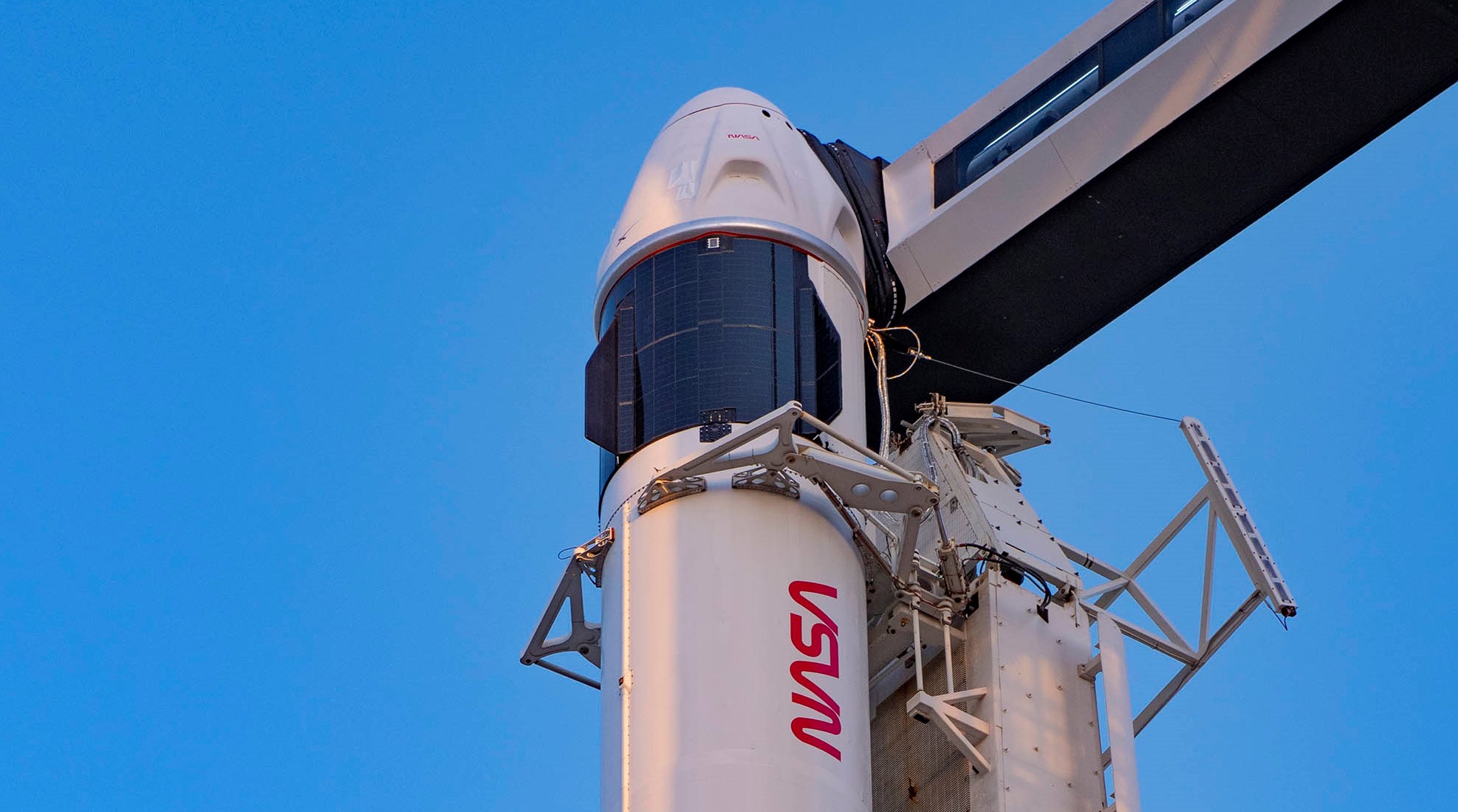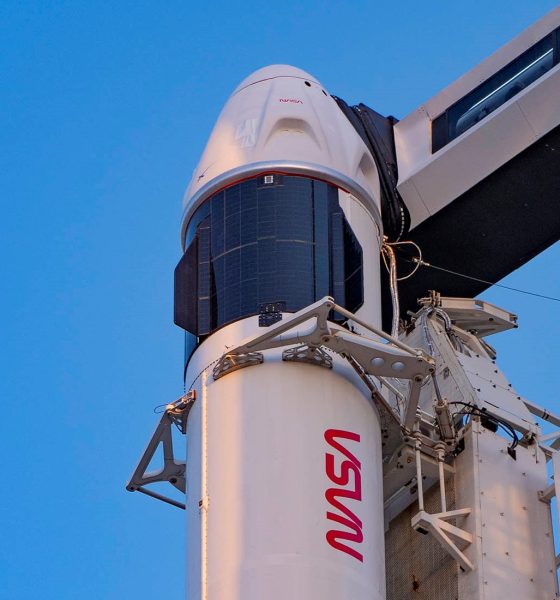

News
SpaceX, NASA announce date for next Crew Dragon astronaut launch
SpaceX and NASA have settled on October 3rd for the company’s fifth operational astronaut launch, a mission that will also mark the first time a Russian cosmonaut flies on Crew Dragon.
Initially scheduled to launch in early September, NASA announced in July that SpaceX’s Crew-5 launch was slipping to late September after the company accidentally ran its new Falcon 9 rocket booster into a bridge. Luckily for SpaceX, the incident only damaged the top of the booster and was easily resolved with a replacement interstage, but the unplanned repairs still took time and delayed the start of qualification testing in McGregor, Texas.
Ultimately, the damage triggered a delay of about a month, pushing the launch to September 29th. About a month later, NASA and SpaceX have refined that date to 12:55 pm EDT (16:55 UTC) on October 3rd to ensure “extra separation with spacecraft traffic” at the busy International Space Station (ISS).
After such an inauspicious start to its life outside the walls of SpaceX’s Hawthorne, California factory, Falcon 9 booster B1077 was repaired and completed a 78-second static fire test without issue in early August. As of now, the booster is likely almost ready to ship from McGregor, Texas to Cape Canaveral, Florida if it hasn’t left already.
Crew-5 is the second Dragon mission in a row to be significantly delayed by issues with SpaceX hardware after CRS-25 – an uncrewed space station cargo delivery – slipped from June 9th to July 11th because of a leaky Cargo Dragon thruster. Delays of more than a few days caused by SpaceX’s pad, rockets, or spacecraft have become a rarity as the company gains more and more near-term experience operating them around the clock.
In a strange decision, NASA also decided to uphold old plans to swap seats between Soyuz and Commercial Crew vehicles, allowing a Russian cosmonaut to fly on Crew Dragon as the country continues to commit war crimes, kidnap and expatriate vast numbers of legal citizens, and terrorize tens of millions more with its illegal war on Ukraine. Worse, Russia has repeatedly used the International Space Station and its cosmonauts to disseminate propaganda about the war and boast about the new territories it continues to steal from the sovereign nation. Nonetheless, NASA has allowed the deal to continue, and Russian cosmonaut Anna Kikina is on track to launch alongside NASA astronauts Nicole Mann and Josh Cassada and Japanese (JAXA) astronaut Koichi Wakata.
Crew-5 will be SpaceX’s eighth astronaut launch overall, seventh astronaut mission to the space station, and sixth astronaut transport mission for NASA. Once docked to the ISS, Crew-5 will take over from Crew-4, who will depart the station soon after in their own Crew Dragon and return to Earth sometime in October.
Due to a string of issues that have caused years of delays for Boeing’s Starliner spacecraft, which was developed simultaneously alongside SpaceX’s Crew Dragon as part of the NASA Commercial Crew Program, SpaceX has been tasked with continuously ensuring the presence of NASA astronauts at the ISS since November 2020. Equivalent to Crew Dragon’s May 2020 Demo-2 mission, Boeing’s first crewed Starliner flight test (CFT) is scheduled to launch no earlier than (NET) February 2023. SpaceX is thus guaranteed to be NASA’s sole path to the ISS until Q3 or Q4 2023, but that period could easily stretch into 2024 if Boeing runs into any additional issues with Starliner over the next year.

Elon Musk
Elon Musk’s X will start using a Tesla-like software update strategy
The initiative seems designed to accelerate updates to the social media platform, while maintaining maximum transparency.

Elon Musk’s social media platform X will adopt a Tesla-esque approach to software updates for its algorithm.
The initiative seems designed to accelerate updates to the social media platform, while maintaining maximum transparency.
X’s updates to its updates
As per Musk in a post on X, the social media company will be making a new algorithm to determine what organic and advertising posts are recommended to users. These updates would then be repeated every four weeks.
“We will make the new 𝕏 algorithm, including all code used to determine what organic and advertising posts are recommended to users, open source in 7 days. This will be repeated every 4 weeks, with comprehensive developer notes, to help you understand what changed,” Musk wrote in his post.
The initiative somewhat mirrors Tesla’s over-the-air update model, where vehicle software is regularly refined and pushed to users with detailed release notes. This should allow users to better understand the details of X’s every update and foster a healthy feedback loop for the social media platform.
xAI and X
X, formerly Twitter, has been acquired by Elon Musk’s artificial intelligence startup, xAI last year. Since then, xAI has seen a rapid rise in valuation. Following the company’s the company’s upsized $20 billion Series E funding round, estimates now suggest that xAI is worth tens about $230 to $235 billion. That’s several times larger than Tesla when Elon Musk received his controversial 2018 CEO Performance Award.
As per xAI, the Series E funding round attracted a diverse group of investors, including Valor Equity Partners, Stepstone Group, Fidelity Management & Research Company, Qatar Investment Authority, MGX, and Baron Capital Group, among others. Strategic partners NVIDIA and Cisco Investments also continued support for building the world’s largest GPU clusters.
News
Tesla FSD Supervised wins MotorTrend’s Best Driver Assistance Award
The decision marks a notable reversal for the publication from prior years, with judges citing major real-world improvements that pushed Tesla’s latest FSD software ahead of every competing ADAS system.

Tesla’s Full Self-Driving (Supervised) system has been named the best driver-assistance technology on the market, earning top honors at the 2026 MotorTrend Best Tech Awards.
The decision marks a notable reversal for the publication from prior years, with judges citing major real-world improvements that pushed Tesla’s latest FSD software ahead of every competing ADAS system. And it wasn’t even close.
MotorTrend reverses course
MotorTrend awarded Tesla FSD (Supervised) its 2026 Best Tech Driver Assistance title after extensive testing of the latest v14 software. The publication acknowledged that it had previously criticized earlier versions of FSD for erratic behavior and near-miss incidents, ultimately favoring rivals such as GM’s Super Cruise in earlier evaluations.
According to MotorTrend, the newest iteration of FSD resolved many of those shortcomings. Testers said v14 showed far smoother behavior in complex urban scenarios, including unprotected left turns, traffic circles, emergency vehicles, and dense city streets. While the system still requires constant driver supervision, judges concluded that no other advanced driver-assistance system currently matches its breadth of capability.
Unlike rival systems that rely on combinations of cameras, radar, lidar, and mapped highways, Tesla’s FSD operates using a camera-only approach and is capable of driving on city streets, rural roads, and freeways. MotorTrend stated that pure utility, the ability to handle nearly all road types, ultimately separated FSD from competitors like Ford BlueCruise, GM Super Cruise, and BMW’s Highway Assistant.
High cost and high capability
MotorTrend also addressed FSD’s pricing, which remains significantly higher than rival systems. Tesla currently charges $8,000 for a one-time purchase or $99 per month for a subscription, compared with far lower upfront and subscription costs from other automakers. The publication noted that the premium is justified given FSD’s unmatched scope and continuous software evolution.
Safety remained a central focus of the evaluation. While testers reported collision-free operation over thousands of miles, they noted ongoing concerns around FSD’s configurable driving modes, including options that allow aggressive driving and speeds beyond posted limits. MotorTrend emphasized that, like all Level 2 systems, FSD still depends on a fully attentive human driver at all times.
Despite those caveats, the publication concluded that Tesla’s rapid software progress fundamentally reshaped the competitive landscape. For drivers seeking the most capable hands-on driver-assistance system available today, MotorTrend concluded Tesla FSD (Supervised) now stands alone at the top.
News
Elon Musk’s Grokipedia surges to 5.6M articles, almost 79% of English Wikipedia
The explosive growth marks a major milestone for the AI-powered online encyclopedia, which was launched by Elon Musk’s xAI just months ago.

Elon Musk’s Grokipedia has grown to an impressive 5,615,201 articles as of today, closing in on 79% of the English Wikipedia’s current total of 7,119,376 articles.
The explosive growth marks a major milestone for the AI-powered online encyclopedia, which was launched by Elon Musk’s xAI just months ago. Needless to say, it would only be a matter of time before Grokipedia exceeds English Wikipedia in sheer volume.
Grokipedia’s rapid growth
xAI’s vision for Grokipedia emphasizes neutrality, while Grok’s reasoning capabilities allow for fast drafting and fact-checking. When Elon Musk announced the initiative in late September 2025, he noted that Grokipedia would be an improvement to Wikipedia because it would be designed to avoid bias.
At the time, Musk noted that Grokipedia “is a necessary step towards the xAI goal of understanding the Universe.”
Grokipedia was launched in late October, and while xAI was careful to list it only as Version 0.1 at the time, the online encyclopedia immediately earned praise. Wikipedia co-founder Larry Sanger highlighted the project’s innovative approach, noting how it leverages AI to fill knowledge gaps and enable rapid updates. Netizens also observed how Grokipedia tends to present articles in a more objective manner compared to Wikipedia, which is edited by humans.
Elon Musk’s ambitious plans
With 5,615,201 total articles, Grokipedia has now grown to almost 79% of English Wikipedia’s article base. This is incredibly quick, though Grokipedia remains text-only for now. xAI, for its part, has now updated the online encyclopedia’s iteration to v0.2.
Elon Musk has shared bold ideas for Grokipedia, including sending a record of the entire knowledge base to space as part of xAI’s mission to preserve and expand human understanding. At some point, Musk stated that Grokipedia will be renamed to Encyclopedia Galactica, and it will be sent to the cosmos.
“When Grokipedia is good enough (long way to go), we will change the name to Encyclopedia Galactica. It will be an open source distillation of all knowledge, including audio, images and video. Join xAI to help build the sci-fi version of the Library of Alexandria!” Musk wrote, adding in a later post that “Copies will be etched in stone and sent to the Moon, Mars and beyond. This time, it will not be lost.”








